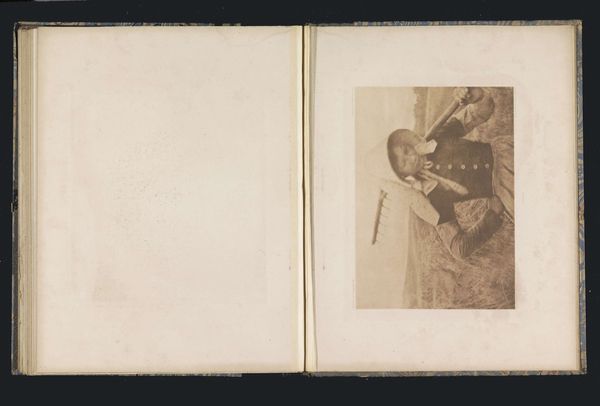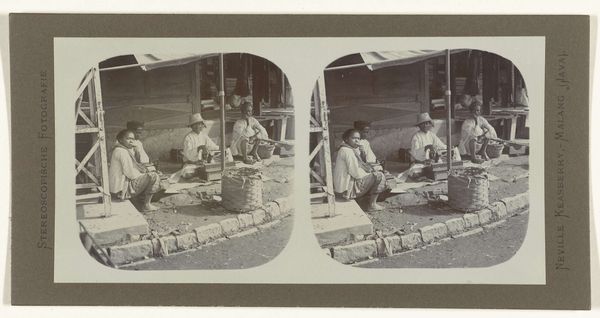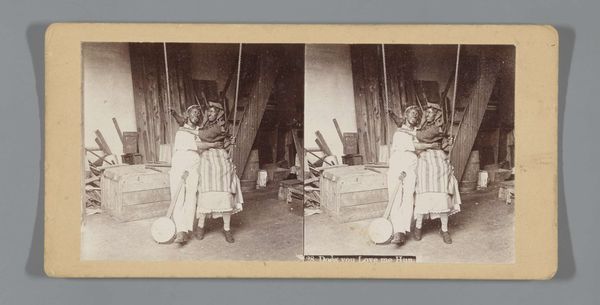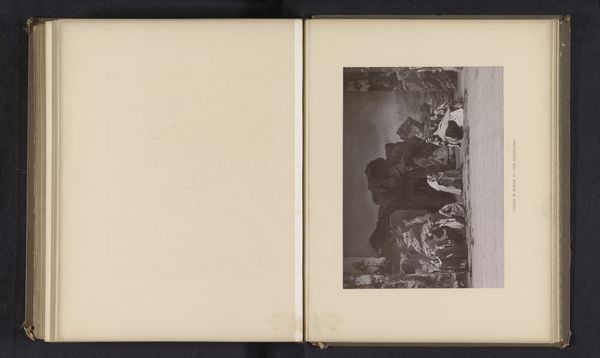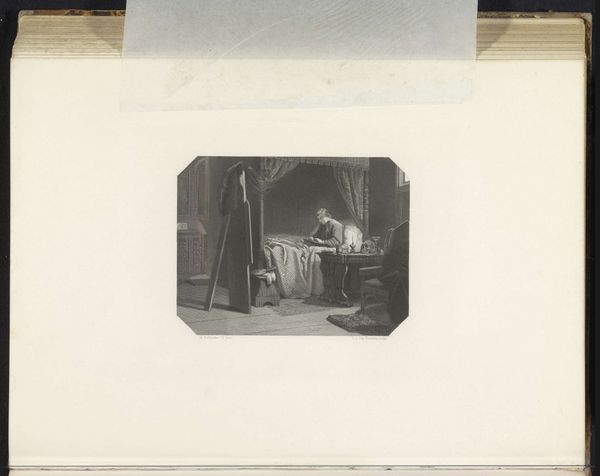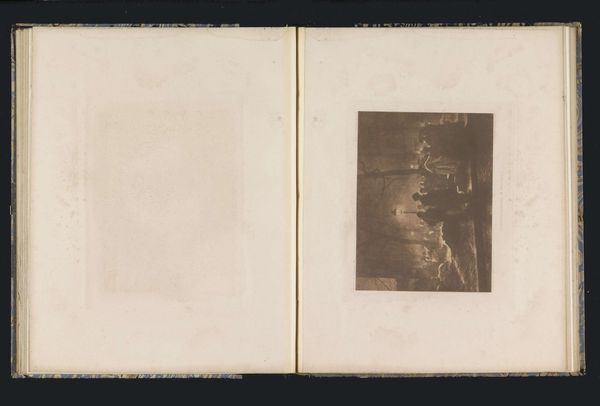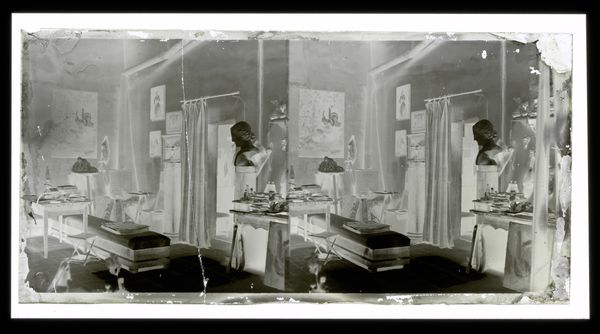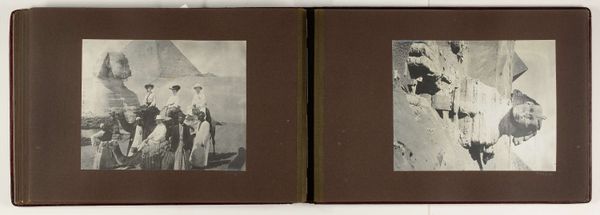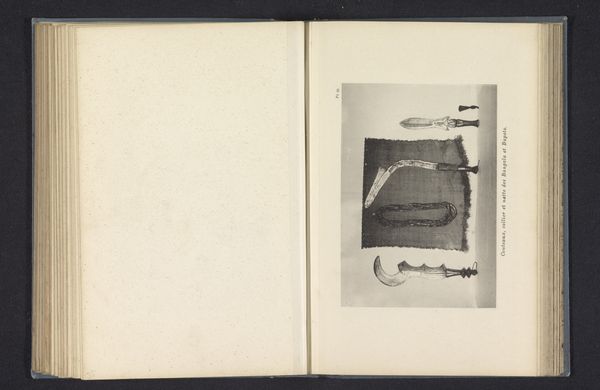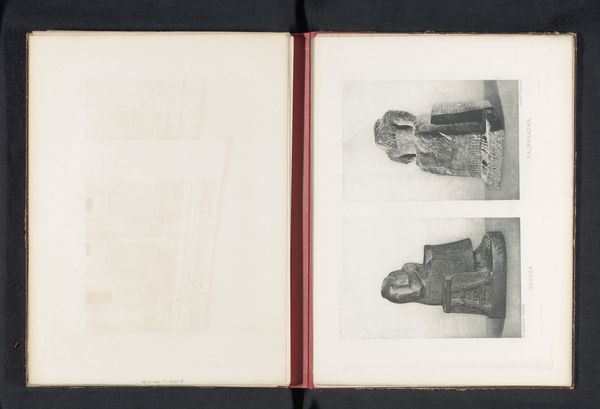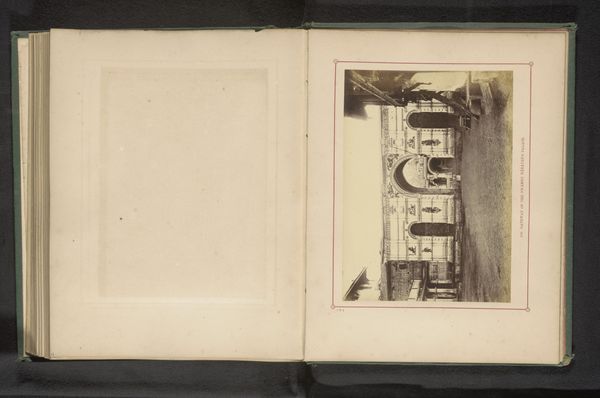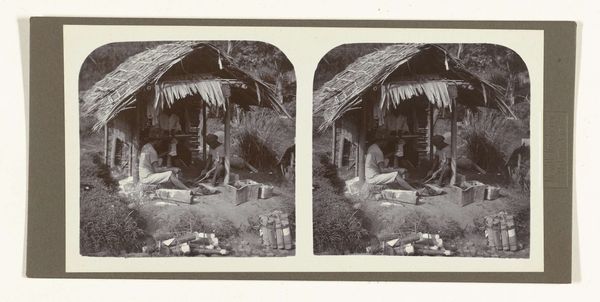
photography
#
portrait
#
asian-art
#
photography
#
realism
Dimensions: height 84 mm, width 172 mm
Copyright: Rijks Museum: Open Domain
Curator: Welcome. We're looking at an albumen print stereograph from sometime between 1857 and 1864. The photographers are Woodbury & Page, and it's titled "Batikker aan het werk, mogelijk in Batavia," which translates to "Batik Workers, possibly in Batavia." It resides here at the Rijksmuseum. Editor: The mood is intensely focused, almost reverent. Two women are meticulously engaged in what looks like incredibly detailed batik work. There's a beautiful simplicity, almost sparseness in the composition. The woven backdrop becomes part of the artwork, enveloping everything in texture. It's wonderfully calming and busy at the same time, you know? Curator: Precisely. Batavia, now Jakarta, was a center for batik production. Stereographs, these paired images viewed through a stereoscope, were immensely popular. Think of them as early VR, transporting viewers to faraway places and cultures. And batik itself, its resist-dyeing process and the patterns— they are not just decoration, but cultural narratives, symbols passed down through generations. Editor: It's incredible to think of the hours, maybe even weeks, poured into a single piece. Each tiny dot of wax a conscious decision, embedding stories in the fabric. You can sense the weight of that tradition, this continuity of craftswomanship passed down through time, echoing through the photograph. Curator: Absolutely. The symmetry in the paired images further underscores the idea of replication and the continuation of the craft, yet the subtle flaws of the process keep it organic, distinctly human. There is the potential for mass production versus unique handmade artifact, where the artisan uses intuition as part of the procedure. Editor: There’s almost a melancholy beauty to this photographic format—a near-obsolete process showing a scene of a tradition steeped in the past and still vibrantly alive at the time it was shot, though, now much less vibrant. Seeing the women intent at their craft is so moving and somehow makes me reflective. Curator: It's a poignant visual record, isn't it? This stereograph not only provides a glimpse into 19th-century Indonesian craftsmanship, but also prompts us to reflect on cultural memory and how we encode meaning into material things. Editor: Indeed. It leaves me wondering about the future, what traditions will persevere, and how will future generations preserve the weight of culture that these craftspeople embedded in a simple fabric.
Comments
No comments
Be the first to comment and join the conversation on the ultimate creative platform.
